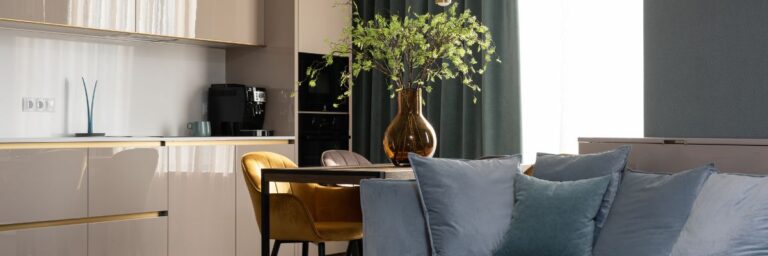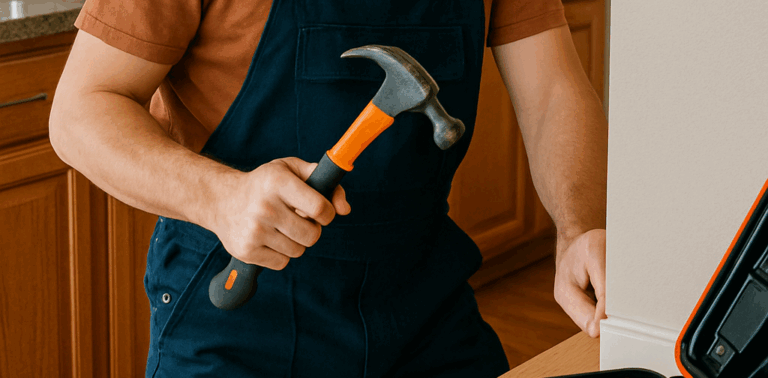Planning a home renovation is an exciting opportunity to revitalize your space and elevate your lifestyle. But the cornerstone to any successful project is a well-crafted, realistic budget. Without it, costs can spiral, timelines can derail, and stress can take over. At Amsted, we work closely with homeowners in the to create transparent, realistic budgets that balance vision, quality, and financial clarity. This guide is your roadmap for building a renovation plan that you can execute with confidence.
Why a Realistic Budget Matters
A renovation budget isn’t just numbers—it’s the foundation of your project’s success. Here’s why it’s essential:
Prevent Cost Overruns: A clear budget helps avoid mid-project surprises and emergency fund depletion.
Set Clear Expectations: Defining your budget early aligns priorities—from fixtures and finishes to scheduling and scope adjustments.
Maintain Scope Control: With a well-defined budget, it’s easier to avoid continuous “feature creep” and stick to your goals.
Enhance ROI: Whether you’re renovating for lifestyle or sale, tracking costs and adjusting features strategically improves your resale returns.
Step 1: Define Your Renovation Goals & Priorities
Before crunching numbers, define “why.” Understanding your renovation objectives sets the tone for budgeting, design, and decision-making.
Clarify Your Purpose
- Everyday Comfort: Upgrades that improve routine use—like refreshed cabinetry, modern lighting, or energy-efficient appliances.
- Major Layout Overhaul: Projects involving structural changes, room conversions, or expanding ceilings.
- Resale-Driven Renovations: Updates such as kitchen makeovers or modernized bathrooms aimed at enhancing appeal and market value.
- Accessibility Enhancements: Features like barrier-free showers or widened doorways that anticipate aging needs.
Prioritize Must-Haves vs. Nice-To-Haves
Create a tiered list:
- Essential: Critical components necessary for safety, functionality, or compliance.
- Valuable: Enhancements that improve experience and resale value.
- Optional: Luxuries that can be included if budget allows.
Identifying these tiers helps you stay flexible during budgeting and ensures that essential elements receive priority.
Step 2: Estimate Costs for Key Renovation Categories
Your budget should reflect every element of the renovation—from structure to finish. Here’s a typical breakdown of cost categories, with ranges you can expect in the GTA market:
Demolition & Preparation
Includes removal of existing fixtures, finishes, wall sections, debris disposal, and dust containment.
Estimated Cost: $800–$3,000 depending on scope and *site conditions*.
Structural & Framing Work
Includes load-bearing wall removal, foundation adjustments, or any minor additions and supports.
Estimated Cost: $2,000–$8,000, varying by complexity and engineering requirements.
Plumbing & Electrical Systems
Costs for new fixture installations, relocations, upgraded panels, wiring, and plumbing rough-ins.
Estimated Cost: $3,500–$8,000+
Insulation, Drywall & Finishes
Includes insulation, drywall installation, painting, and trim work.
Estimated Cost: $4,000–$10,000 depending on finish quality and area.
Flooring
Includes hardwood, tile, luxury vinyl plank, or carpeting.
Estimated Cost: $5–$25/sq ft installed; medium rooms average $5,000–$11,000 total.
Cabinetry & Millwork
Vanities, custom millwork, built-ins, shelving.
Estimated Cost: $6,000–$18,000 depending on cabinetry scope and materials.
Counters & Surfaces
Quartz, granite, butcher-block, or tile counters.
Estimated Cost: $50–$120/sq ft installed.
Fixtures & Appliances
Includes faucets, sinks, tubs, toilets, lighting, and appliances.
Estimated Cost: $3,000–$10,000+
Tile & Shower Surrounds
Material and labor for wet areas like showers and backsplashes.
Estimated Cost: $6–$30/sq ft material + labor; average $5,000–$15,000.
HVAC & Ventilation
Includes bathroom fans, ductwork, HVAC adjustments, and plumbing vents.
Estimated Cost: $1,500–$4,500.
Permitting & Inspections
Municipal permit fees and mandated safety and code-inspection scheduling.
Estimated Cost: $500–$2,500.
Site Protection & Clean-Up
Includes temporary walls, dust controls, dumpster rentals, and final cleaning.
Estimated Cost: $1,000–$4,000.
Labor & Project Management
General contractor’s overhead, scheduling, and trade coordination.
Estimated Cost: Typically 30–50% of total project cost including materials.
This brings mid-range renovations to around $30,000–$70,000 depending on scale, home type, and finishes chosen.
Step 3: Research Local Costs & Gather Multiple Bids
While cost ranges help you set a preliminary budget, real-world quotes are critical for accuracy.
Collect Three Estimates
- From well-reviewed contractors active in your area.
- Ensure each estimate is detailed and itemized—include labor, materials, and allowances.
- Identify omissions such as permits, staging, or waste removal.
Benchmark Against Regional Projects
Amsted shares anonymized project data to provide homeowners insight into comparable renos regionally—avoiding sticker shock and confirming estimation accuracy.
Material & Selection Allowances
Large retailers may offer bulk price transparency; local showrooms can clarify costs for premium materials. Understanding allowances ensures your selections fit the budget bracket.
Step 4: Build in Contingencies & Buffers
Just like good insurance, a contingency fund protects your renovation from financial derailment.
Standard Contingency (10–15%)
Applied to total hard costs—covers unexpected repairs, minor material upgrades, or small changes.
Finish Upgrade Allowance (5–10%)
Allocated for color shifts, upgraded fabrics, accessory selection surprises.
Living Expense Reserve (~$2,000–$7,000)
Includes meals, temporary relocation (hotel or Airbnb), utility adjustments, or daycare coordination during disruptions.
Altogether, a 20–25% buffer beyond the base estimate helps you avoid financial strain and maintain project momentum.
Step 5: Allocate Funding & Choose Financing
With a finalized estimate and contingency, determine how you’ll fund the project:
- Equity or Savings: Ideal if available—but consider maintaining emergency reserves.
- Construction Loans: If the renovation is extensive. Plan for draw schedules and interest.
- Personal Loan: If within manageable limits and quick payoff is feasible.
Set your payment plan schedule aligned with contractor milestones, and track your spending against the budget as the project continues.
Step 6: Track & Manage Budget Throughout Your Project
Once construction starts, active monitoring prevents drift:
Maintain a Budget Tracker
- Watch expenses against the budget for each category.
- Clearly document change orders and their cost implications.
- Manage contingency draws carefully—once used, they’re gone.
Hold Regular Review Meetings
At each major phase—demolition, rough-in, finishing, punch-list—review actuals vs. forecast and finalize selections. This ensures alignment and prevents unnecessary scope creep.
Document Everything
Keep dated records—contracts, invoices, receipts, correspondence, change-orders. This is invaluable in case of disputes, insurance claims, or resale disclosures.
Step 7: Adjust Strategically When Needed
If costs begin to ramp up, pivot instead of panicking:
- Temporarily Defer Non-Essentials: Great upgrades but optional—hold off until after core renovation.
- Opt for Cost-Effective Alternatives: Mid-range quartz vs. premium marble, or engineered flooring vs. hardwood.
- Renegotiate Timing: Can certain finishing selections or appliance purchases wait for seasonal promotions?
A flexible mindset gives you financial resilience and shields the quality of the essential renovation work.
Step 8: Evaluate ROI in Relation to Budget
Consider which elements offer the strongest return—particularly for future resale:
- Kitchen Upgrades: Layout optimization, quality cabinetry, feature lighting—up to 70–80% ROI.
- Bathrooms: Mid-range remodels typically recoup 60–70%. Luxury upgrades can recapture up to 80% in some markets.
- Energy Efficiency: Insulation, windows, HVAC—boost resale and reduce operating costs over time.
- Practical Add-Ons: Mudrooms, storage solutions, and workspaces show strong appeal and demand.
Amsted can provide region-specific ROI data, helping you prioritize renovations that boost both lifestyle and resale value.
Step 9: Final Walkthrough & Budget Wrap-Up
Once the work is done, don’t close the book just yet:
- Cross-check invoices against contracts and change orders.
- Identify unused contingency funds—either reinvest in final touches or return them.
- Ask your general contractor for final documentation—warranties, manuals, and maintenance tips.
A thorough wrap-up ensures that your project stays within budget and you complete with financial clarity.
Why Amsted’s Budgeting Stands Out
Here’s what sets our budgeting process apart:
- Transparent Cost Breakdown: We provide comprehensive estimates, itemized scope, and documented assumptions early.
- Real-Time Tracking: Our client portal gives you ongoing access to budget updates, payment schedules, and progress photos.
- Proven Contingency Systems: We actively manage and replenish contingency reserves—keeping flow intact and unexpected costs controlled.
- ROI-Focused Prioritization: We help you choose upgrades that hold value—rationalizing splurge vs. essential decisions.
- Post-Project Reflections: Final financial reconciliation ensures your renovation wraps neatly—and correctly—financially.
Get Started on a Budget That Works
- Clarify your renovation objectives and rank your priorities.
- Gather three detailed quotes including hard, soft, and contingency costs.
- Build a stage-based budget with contingencies (20–25% buffer).
- Select your funding channel—loan, equity, or savings.
- Review actuals at key phases—adjust choices, defer non-essentials as needed.
- Conduct a final review, reconcile the budget, and collect documentation.
With a well-designed and managed budget, your renovation can proceed smoothly—from demolition dust to final design flourish—without financial surprises stealing joy.
Your Smart Renovation Starts Now
The key to renovation success is clarity—from your timeline to your budget. With Amsted as your partner, you’ll benefit from cost transparency, attentive communication, and financial systems designed to protect your dollars and design vision.
If you’re ready to explore a renovation plan grounded in realistic budgeting and rich with potential, reach out to www.amsted.ca/ today. We’ll help you turn intentions into planning—and planning into a beautifully executed renovation.




